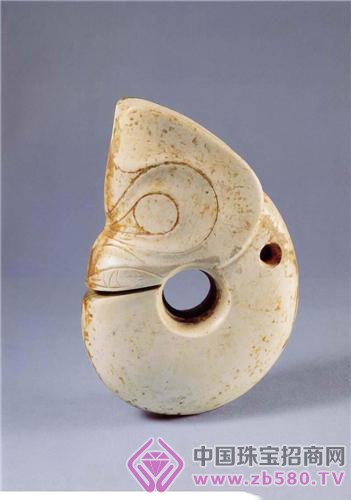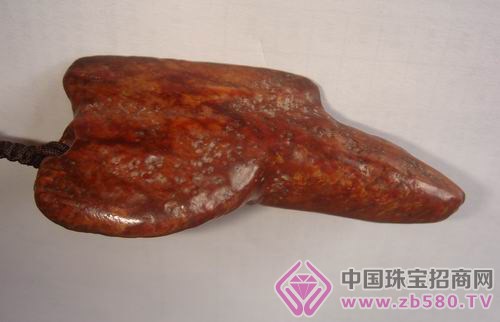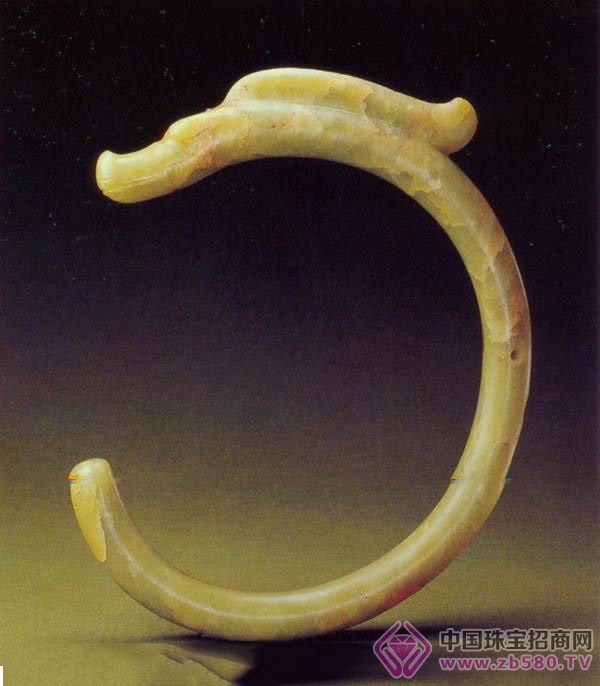Favorite fans pay attention! Hongshan jade identification Xiaoyan "baked out"
What is the flaw in the identification of Hongshan jade? The identification of Hongshan jade is becoming more and more difficult in the near future. The phenomenon that the fake product is genuine and the genuine product is the imitation product, no matter whether it is true or false, more or less certainly has some collections. Among them, Hongshan culture jade is the most popular in the city, and it is also the most easy to deceive. Therefore, collectors should pay attention. Therefore, the Hongshan culture jade is mainly identified from six aspects: jade material, carving work, shape, ornamentation, ochre and use.
Jade material for the method of red mountain jade identification

The Hongshan culture jade is generally made of Liaoning Xiuyan nephrite. The mineral composition is mainly composed of uneven and fine crystallized tremolite. The jade material is greenish or pale yellow, and also has yellow color. The general hardness is 6-6.5, and the specific gravity is 2.9-3.1. Generally waxy luster, some have a glass luster. Since the texture of the crude crystalline jadeite is soft and the internal crystal structure is coarse, it is easy to dye and smash. Many of the jade materials that are commonly seen in the market are imprinted, but they look more natural.
Carving of the method of red mountain jade identification
The carvings of Hongshan culture jade are generally simple, there are not many patterns, and generally simple openwork is more common. Most of them use the smashing work (known as the tiling pattern), and the line drawing is also rare. It is made of agate or quartz tool with water and jade sand. Therefore, the edge of Hongshan culture jade has a sharp edge. The drilling of Hongshan culture jade is generally divided into three methods: single method drilling, double method drilling and tilting pair drilling. The perforation marks of the ancients can be seen in each drilling method. The single-hole drilling generally has a flared shape; the double-drilling is generally a drum-like or bee-waist shape, and the hole has an irregular pattern of large and small sides on both sides; the inclined pair of drills is obliquely drilled on the object one method. The holes that are connected to each other are called "bull-nose" because they are like the nostrils of the cow. They are convenient for sewing ornaments. Spiral grinding marks can be seen on the side walls of all the above holes, which are simple and natural. Now the antiques are utilitarian, and there is no such thing as the perseverance of the ancients who used a half year or even a few years to grind a jade. Generally, the traces of modern electric tools are more obvious, and the ancient taste is lost.
The shape of Hongshan jade identification method
The shape of the Hongshan culture jade is generally small, the body is flat and thin, and the edges are mostly sloped and sharp-edged (except for the jade pig and the C-type dragon). The large objects are almost invisible, and there are no furnishings. Now the city law can be seen everywhere. The large-scale human heads of the Hongshan culture, the thick and heavy ornaments are all subjectively created by modern people. The red mountain culture jade is also divided into positive and negative points. Generally, the normal method is mostly polished for various types of shapes. Most of the edges are ground into a flat and thin blade shape. The back is generally perforated, and it is a flat back method. Traces of the polished stone. Such as hook cloud jade? , jade turtles, etc., their shapes are like this. Nowadays, many Hongshan culture jade wares on the market are double-legal and have no positive or negative points. It is conceivable that these must be false.
Red Mountain jade identification method

The jade ornamentation of Hongshan culture is relatively simple. The commonly used ornamentation is a simple wrap pattern or a stencil line, which is generally expressed in the way of reducing the ground. Hook-cloud-shaped and jade-arms and other shapes are more tiling, and the edges and corners are generally odd and not even; and like jade? The jade turtle is engraved by using the method of reducing the yang on the eyes and back. Nowadays, some Hongshan culture jade articles on the market either engrave the text on the surface of the table, or sculpt the ornament on different utensils, which is inconsistent with the actual common sense. The vast collection of lovers are tempted to create new styles and be deceived by others.
The color of Hongshan jade identification method
There are only two types of tombs that have been excavated through archaeological excavations in the Hongshan Cultural Area. The stone tombs are generally found in Chaoyang City, Liaoning Province. The tombs of the pits are mostly found in the Chifeng area of ​​Inner Mongolia. Because the stone tomb is made of a large number of slate combined with clay, it generally has good preservation, and it is not easy to infiltrate into sand and is not easy to be affected. The earthen tomb is in a dry climate, desertification, desertification, and general soil composition. Severe water shortage, sanding is more serious, and jade articles are affected to varying degrees. Therefore, most of the Hongshan culture jade articles are well preserved. Only a few jade articles have chicken bone white phenomenon. Most of the jade products are also original colors and waxy luster. Nowadays, many collectors think that the longer they are, the more serious the jade is, which is precisely the opportunity for many antiques to take advantage of. Nowadays, many so-called Hongshan culture jade articles circulating in the city law are not dyed black or red. In order to express jade, the jade is polished very bright, but the Hongshan culture is a jade without glass luster. I have found such an example, the majority of jade lovers must pay attention.
The use of Hongshan jade identification method

According to the archaeological excavation report, the jade articles of Hongshan culture are from the tombs. The so-called small tombs are small pieces, and the tombs are large. The representative jade articles (such as jade pig dragon, hook cloud jade, jade hoop, etc.) are mostly from the large tombs of Hongshan culture. According to research, the owners of these tombs should be primitive social leaders or tribal wizards. In the primitive society, the two may be one person, and the large number of perforated jade found in their tombs are sewn on clothing.
Lady'S Dresses,Custom Lady'S Dresses,Lady'S Polyester Cotton Dresses,Cotton Lady'S Dresses
SHAOXING OCEAN CO., LTD , https://www.sxgarments.com
